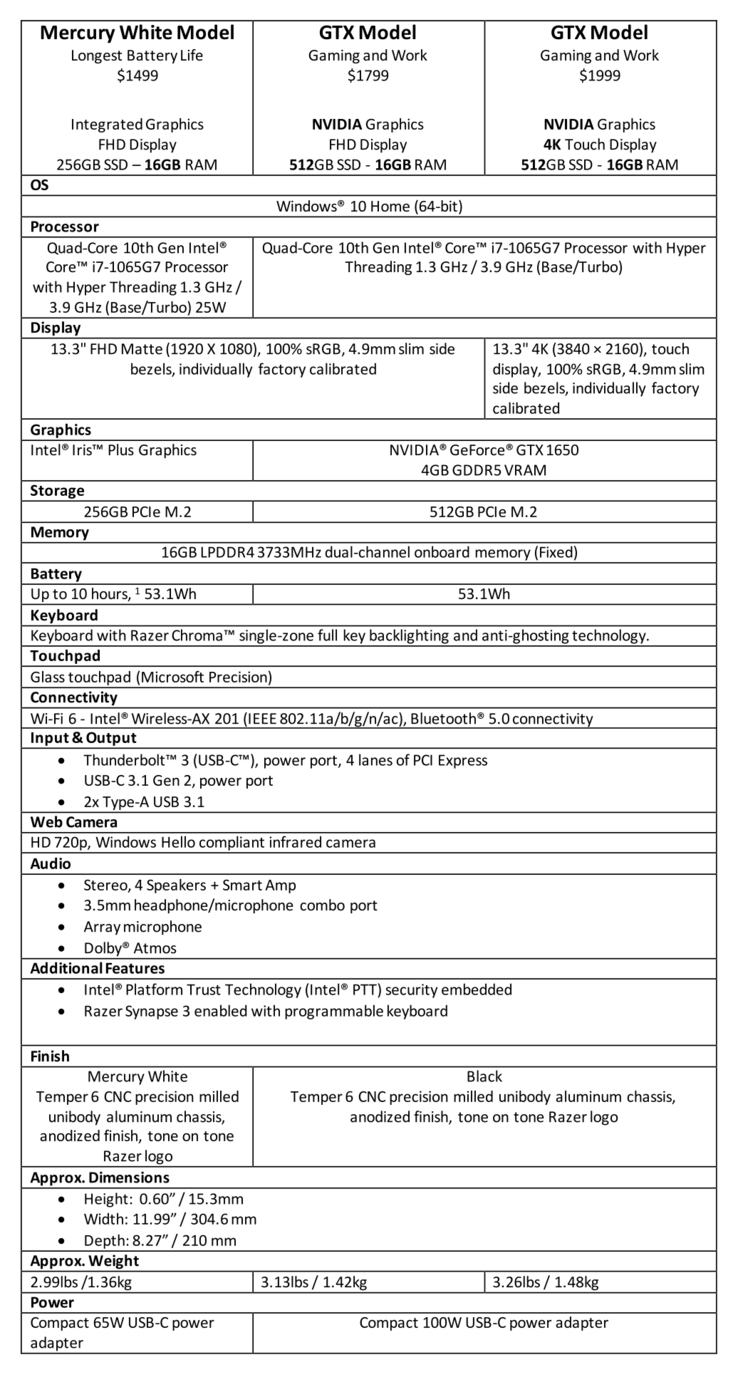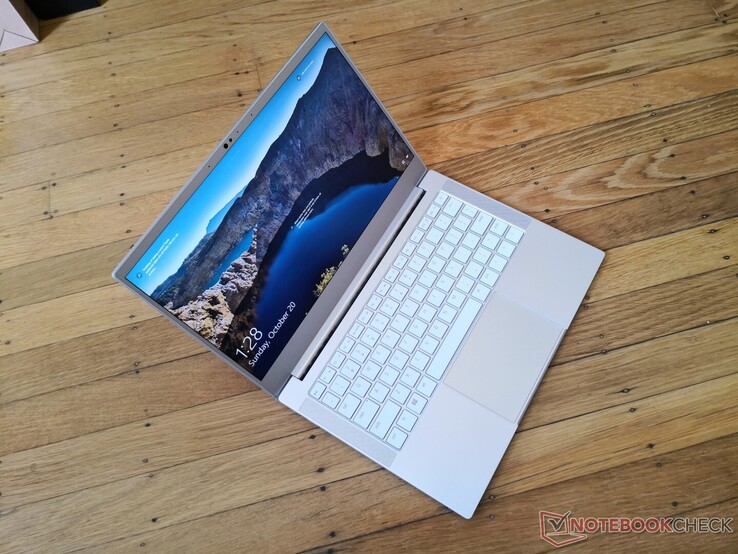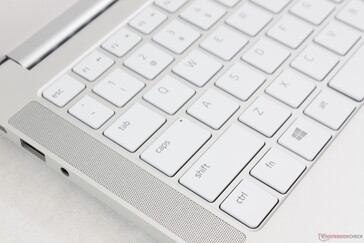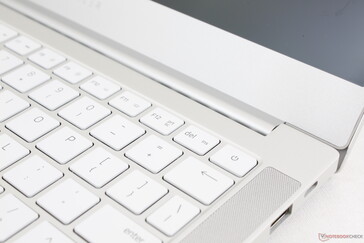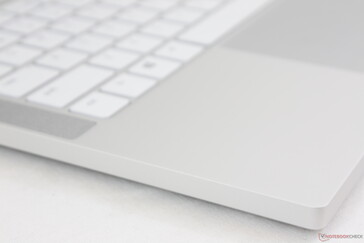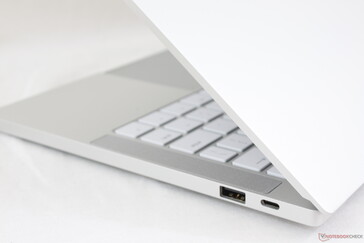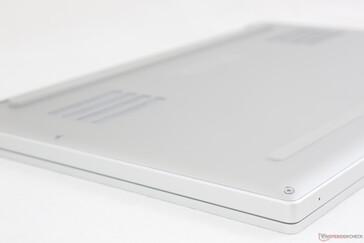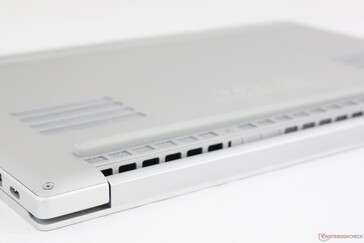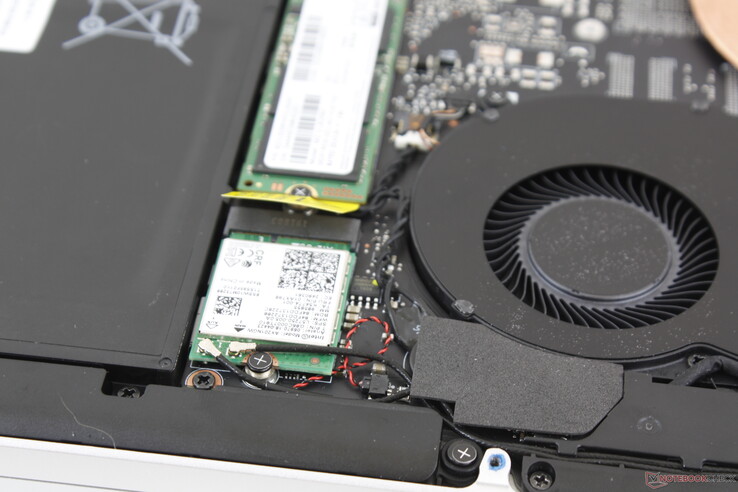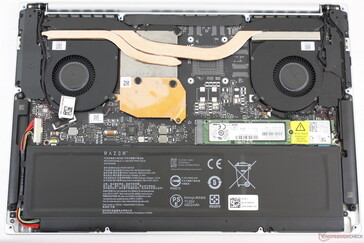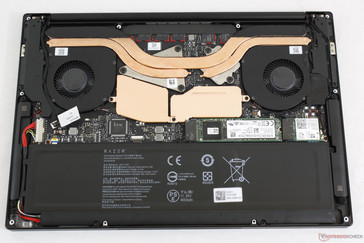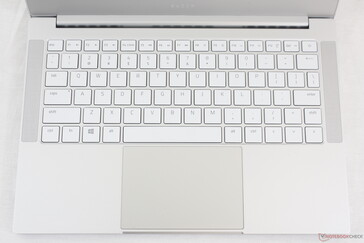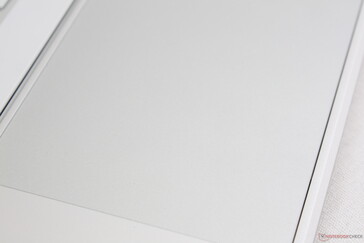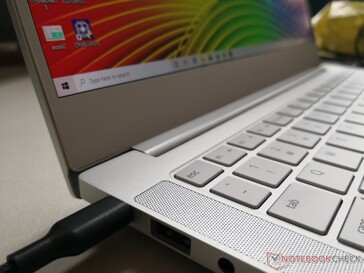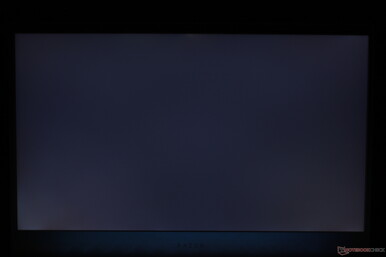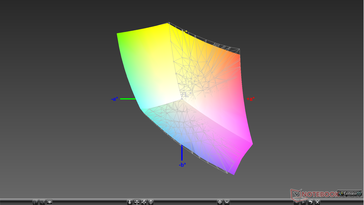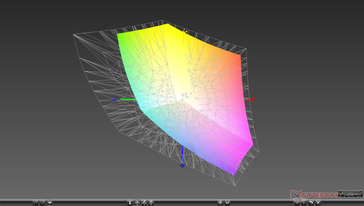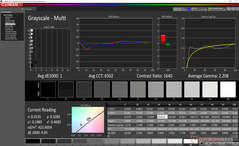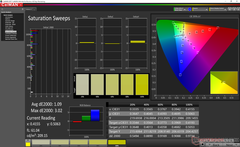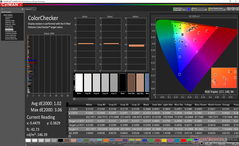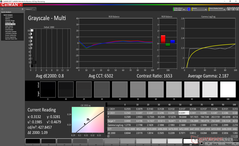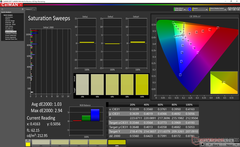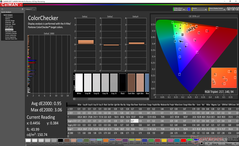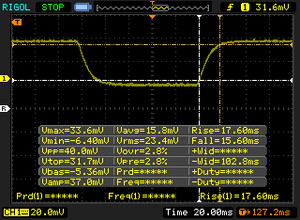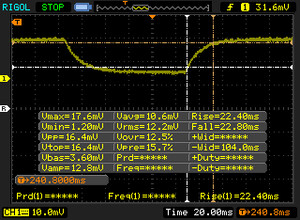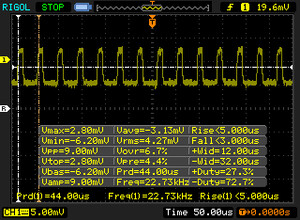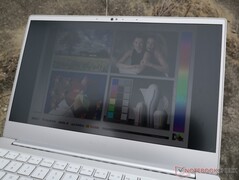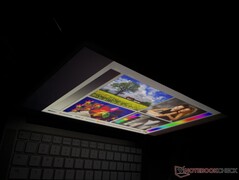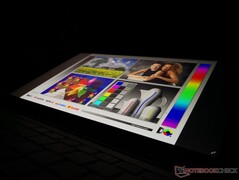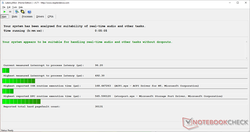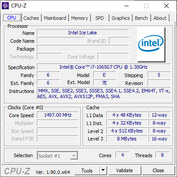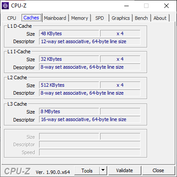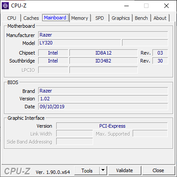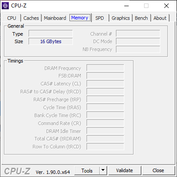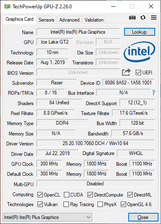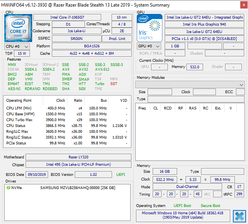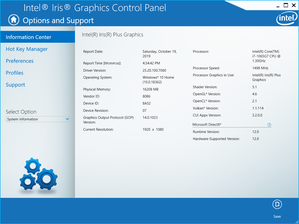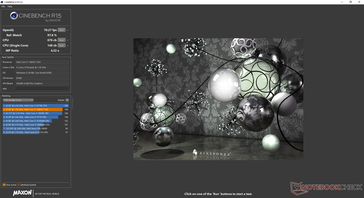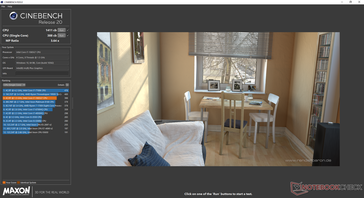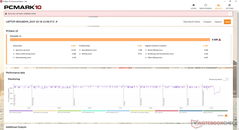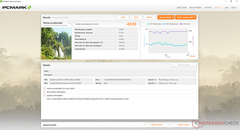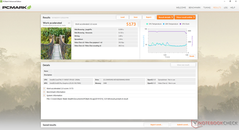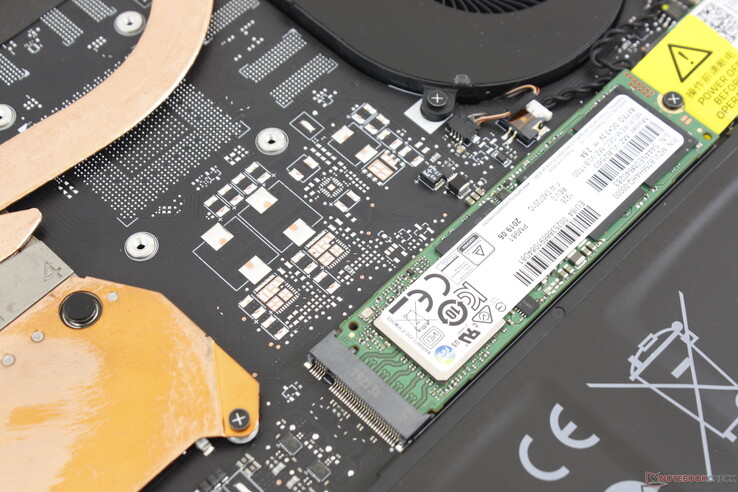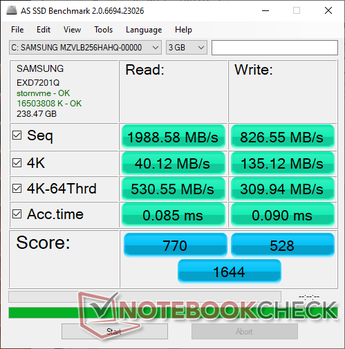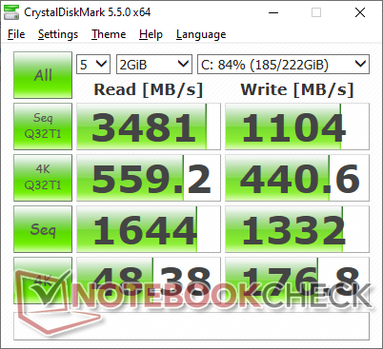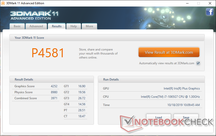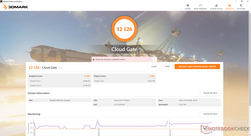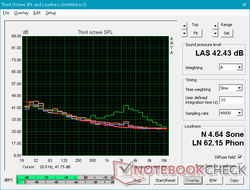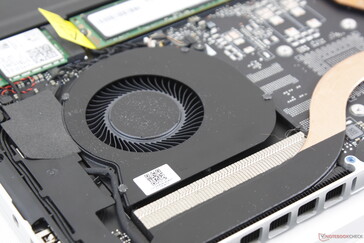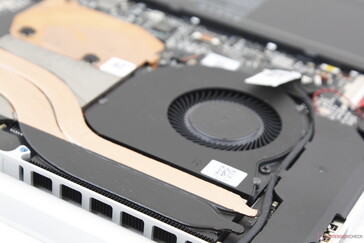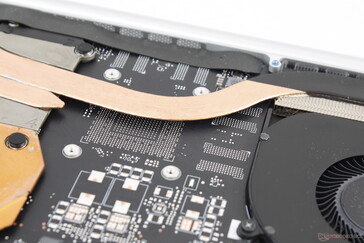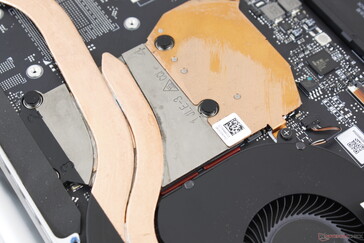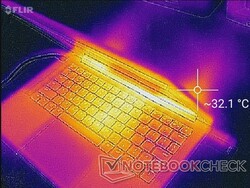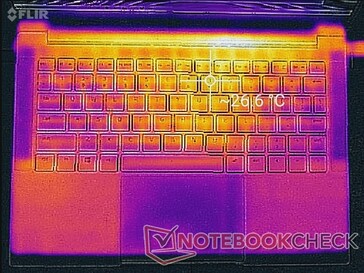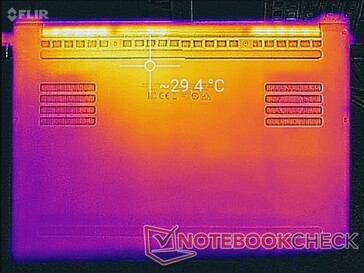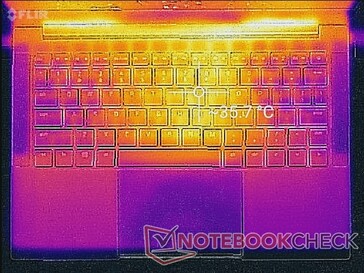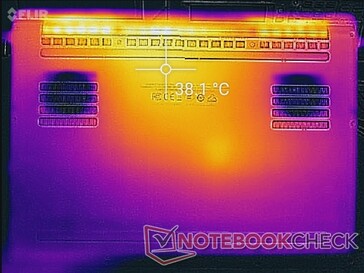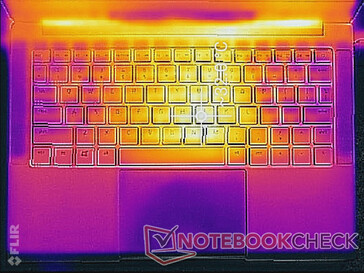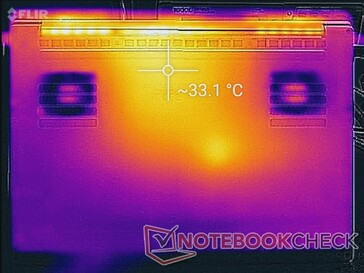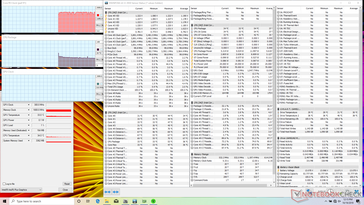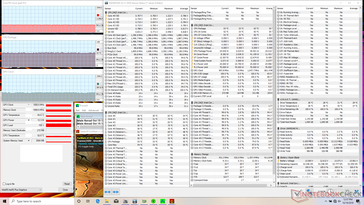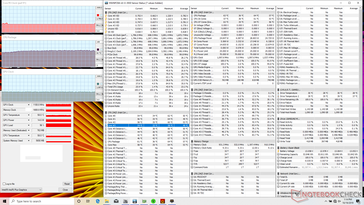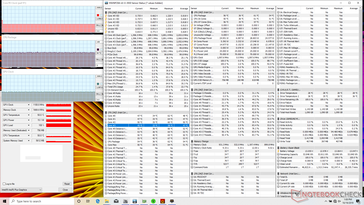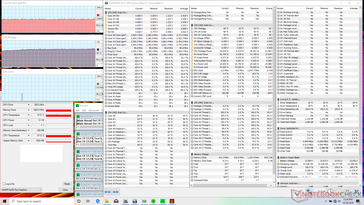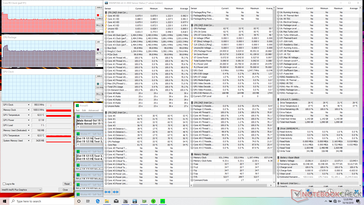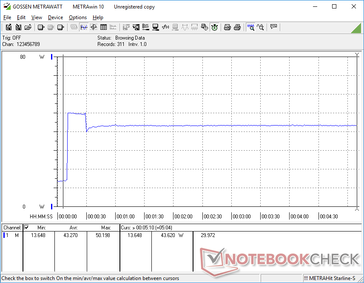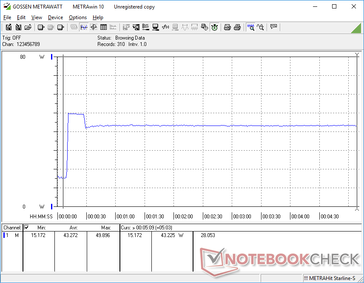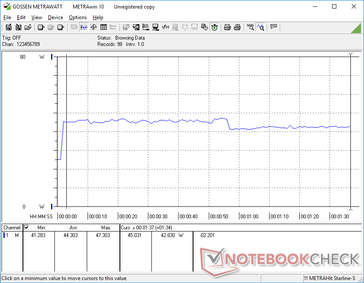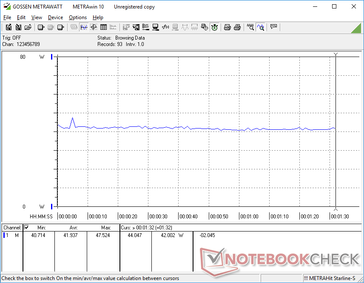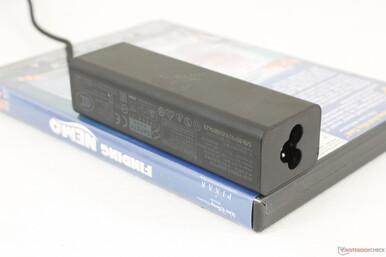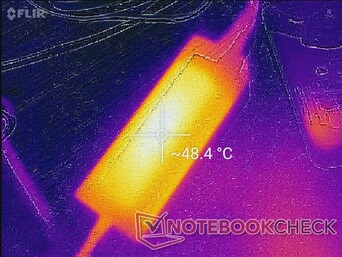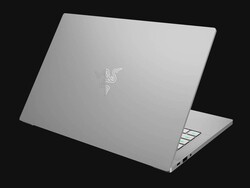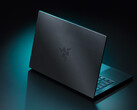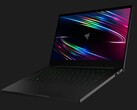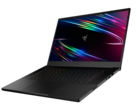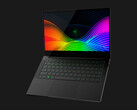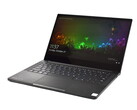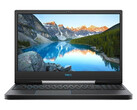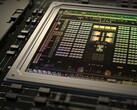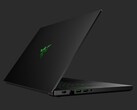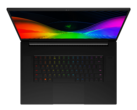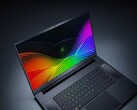Razer Blade Stealth i7-1065G7 Iris Plus Laptop Review: The Cheaper GeForce MX150 is Faster
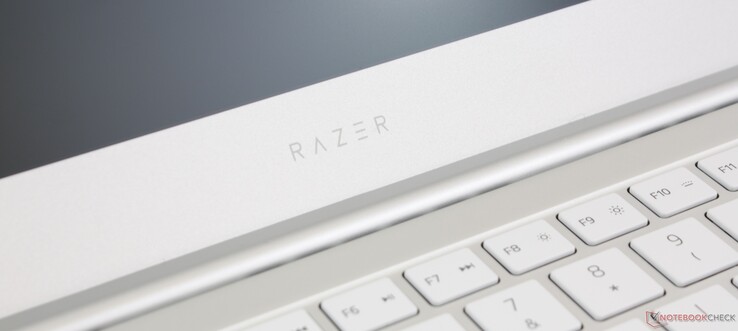
Razer announced two Blade Stealth Ice Lake SKUs back in September: the 25 W Core i7-1065G7 configuration with Iris Plus graphics for $1500 and the 15 W Core i7-1065G7 configuration with the GeForce GTX 1650 Max-Q graphics for $1800 USD. This review will focus on the 25 W configuration and the any advantages and disadvantages it brings to the table when compared to the last generation Whiskey Lake-U and GeForce MX Blade Stealth options. Expect our review on the Blade Stealth Ice Lake GTX 1650 Max-Q SKU to come soon.
Aside from the processor swap, the Blade Stealth Ice Lake is visually identical to last year's Blade Stealth with only a few differences that we will note below. Thus, we recommend checking out our existing review pages to learn more about the chassis, keyboard, clickpad, display, speakers, and ports since these remain unchanged.
Major competitors to the Blade Stealth Ice Lake include other flagship Ultrabooks like the Dell XPS 13, Huawei MateBook X Pro, Asus ZenBook S13, Lenovo Yoga C940, or HP Spectre 13.
More Razer Blade reviews:
Rating | Date | Model | Weight | Height | Size | Resolution | Price |
|---|---|---|---|---|---|---|---|
| 86.3 % v7 (old) | 10 / 2019 | Razer Blade Stealth i7-1065G7 Iris Plus i7-1065G7, Iris Plus Graphics G7 (Ice Lake 64 EU) | 1.4 kg | 15.3 mm | 13.30" | 1920x1080 | |
| 86.3 % v7 (old) | 10 / 2019 | Dell XPS 13 7390 2-in-1 Core i7 i7-1065G7, Iris Plus Graphics G7 (Ice Lake 64 EU) | 1.3 kg | 13 mm | 13.40" | 1920x1200 | |
| 88.2 % v7 (old) | 10 / 2019 | Lenovo Yoga C940-14IIL i7-1065G7, Iris Plus Graphics G7 (Ice Lake 64 EU) | 1.4 kg | 14.95 mm | 14.00" | 1920x1080 | |
| 86.6 % v6 (old) | 05 / 2019 | Asus ZenBook S13 UX392FN i7-8565U, GeForce MX150 | 1.1 kg | 12.9 mm | 13.90" | 1920x1080 | |
v (old) | 04 / 2020 | MSI Modern 14 A10RB i7-10710U, GeForce MX250 | 1.2 kg | 16 mm | 14.00" | 1920x1080 |
Case - Now Slightly Thicker
The chassis for the Blade Stealth Ice Lake SKUs is 0.5 mm thicker than the chassis for the Blade Stealth Whiskey Lake SKUs. Razer says the change in thickness was necessary in order to accommodate the new Ice Lake and optional Turing GPU processors. Otherwise, everything else about the chassis looks and feels just as it did on last year's model.
Currently, the base Iris Plus SKU comes only in Mercury White while the higher-end GTX 1650 Max-Q SKU comes only in Black.
Connectivity - Symmetrical Port Positioning
Both HDMI and an SD reader are still missing on the Blade Stealth. Thus, you'll have to rely on DisplayPort over USB or Thunderbolt 3 for connecting external monitors and SD card reader adapters.
Communication - Wi-Fi 6 Now Standard
Wireless has been updated from the Intel 9560 on last year's model to the Intel AX201 for Wi-Fi 6 connectivity. Should your network support it, theoretical transfer rates can be up to 2.4 GHz compared to "only" 1.73 Gbps on the Intel 9560. We experienced no connectivity issues during our time with the test unit.
Maintenance
Input Devices
Keyboard and Touchpad
There are no changes to the keyboard or clickpad. The white key caps and gray font colors, however, contrast more poorly when compared to the standard black Blade Stealth. Other white laptops like the HP Spectre 13 or Dell XPS 13 7390 2-in-1 share this same disadvantage as well.
Display - Same Familiar Sharp Panel
No changes have been made to the display as the Blade Stealth Ice Lake uses the same Sharp LQ133M1JW41 1080p panel as found on the Blade Stealth Whiskey Lake-U. Brightness, contrast, colors, and response times are therefore nearly the same between them as shown by the table below. Uneven backlight bleeding is slightly worse on our Ice Lake test unit and so it's still a gamble if you're looking for that perfectly uniform backlight.
| |||||||||||||||||||||||||
Brightness Distribution: 87 %
Center on Battery: 422.6 cd/m²
Contrast: 1207:1 (Black: 0.35 cd/m²)
ΔE ColorChecker Calman: 1.02 | ∀{0.5-29.43 Ø4.77}
calibrated: 0.95
ΔE Greyscale Calman: 1 | ∀{0.09-98 Ø5}
97.1% sRGB (Argyll 1.6.3 3D)
62.1% AdobeRGB 1998 (Argyll 1.6.3 3D)
67.1% AdobeRGB 1998 (Argyll 3D)
97.2% sRGB (Argyll 3D)
66.2% Display P3 (Argyll 3D)
Gamma: 2.21
CCT: 6502 K
| Razer Blade Stealth i7-1065G7 Iris Plus Sharp LQ133M1JW41, IPS, 13.3", 1920x1080 | Razer Blade Stealth i7-8565U Sharp LQ133M1JW41, IPS, 13.3", 1920x1080 | Dell XPS 13 7390 2-in-1 Core i7 Sharp LQ134N1, IPS, 13.4", 1920x1200 | Lenovo Yoga C940-14IIL LP140WF9-SPE2, IPS LED, 14", 1920x1080 | Asus ZenBook S13 UX392FN Tianma XM, IPS, 13.9", 1920x1080 | Razer Blade 15 GTX 1660 Ti BOE NV156FHM-N4K, IPS, 15.6", 1920x1080 | |
|---|---|---|---|---|---|---|
| Display | -1% | 5% | 0% | 1% | -3% | |
| Display P3 Coverage (%) | 66.2 | 65.5 -1% | 69.9 6% | 66 0% | 67.5 2% | 65.3 -1% |
| sRGB Coverage (%) | 97.2 | 96.3 -1% | 99.2 2% | 97.9 1% | 95.8 -1% | 91.8 -6% |
| AdobeRGB 1998 Coverage (%) | 67.1 | 66.3 -1% | 71.5 7% | 67.3 0% | 69 3% | 66.5 -1% |
| Response Times | -15% | 4% | 0% | 11% | 70% | |
| Response Time Grey 50% / Grey 80% * (ms) | 45.2 ? | 57.6 ? -27% | 47.6 ? -5% | 49.6 ? -10% | 47.2 ? -4% | 13.6 ? 70% |
| Response Time Black / White * (ms) | 33.2 ? | 34 ? -2% | 29.2 ? 12% | 30 ? 10% | 24.8 ? 25% | 10 ? 70% |
| PWM Frequency (Hz) | 22730 ? | 22730 ? | 2500 ? | 200 ? | ||
| Screen | -6% | -24% | -51% | -23% | -95% | |
| Brightness middle (cd/m²) | 422.6 | 429.8 2% | 549.8 30% | 384 -9% | 466 10% | 312.7 -26% |
| Brightness (cd/m²) | 404 | 403 0% | 520 29% | 363 -10% | 462 14% | 305 -25% |
| Brightness Distribution (%) | 87 | 89 2% | 86 -1% | 90 3% | 90 3% | 90 3% |
| Black Level * (cd/m²) | 0.35 | 0.32 9% | 0.39 -11% | 0.17 51% | 0.33 6% | 0.27 23% |
| Contrast (:1) | 1207 | 1343 11% | 1410 17% | 2259 87% | 1412 17% | 1158 -4% |
| Colorchecker dE 2000 * | 1.02 | 1.08 -6% | 2.12 -108% | 3.5 -243% | 1.93 -89% | 4.57 -348% |
| Colorchecker dE 2000 max. * | 3.06 | 3.96 -29% | 3.66 -20% | 5.5 -80% | 4.26 -39% | 6.81 -123% |
| Colorchecker dE 2000 calibrated * | 0.95 | 1.21 -27% | 1.37 -44% | 1 -5% | 1.99 -109% | 2.91 -206% |
| Greyscale dE 2000 * | 1 | 1.3 -30% | 2.6 -160% | 4.6 -360% | 1.7 -70% | 4.3 -330% |
| Gamma | 2.21 100% | 2.23 99% | 2.3 96% | 2.32 95% | 2.15 102% | 2.29 96% |
| CCT | 6502 100% | 6452 101% | 6884 94% | 6884 94% | 6382 102% | 7098 92% |
| Color Space (Percent of AdobeRGB 1998) (%) | 62.1 | 61.4 -1% | 65.4 5% | 62 0% | 62.2 0% | 59.4 -4% |
| Color Space (Percent of sRGB) (%) | 97.1 | 96.3 -1% | 99.7 3% | 97.7 1% | 95.7 -1% | 91.3 -6% |
| Total Average (Program / Settings) | -7% /
-6% | -5% /
-15% | -17% /
-35% | -4% /
-15% | -9% /
-57% |
* ... smaller is better
Razer calibrates each unit at factory and our independent X-Rite results confirm this. Average DeltaE values are some of the lowest we've seen on any subnotebook. Attempting to calibrate the display even further ourselves improves grayscale and colors just marginally from DeltaE values of 1.0 to and 1.02 to 0.8 and 0.95, respectively.
Display Response Times
| ↔ Response Time Black to White | ||
|---|---|---|
| 33.2 ms ... rise ↗ and fall ↘ combined | ↗ 17.6 ms rise | |
| ↘ 15.6 ms fall | ||
| The screen shows slow response rates in our tests and will be unsatisfactory for gamers. In comparison, all tested devices range from 0.1 (minimum) to 240 (maximum) ms. » 89 % of all devices are better. This means that the measured response time is worse than the average of all tested devices (20.2 ms). | ||
| ↔ Response Time 50% Grey to 80% Grey | ||
| 45.2 ms ... rise ↗ and fall ↘ combined | ↗ 22.4 ms rise | |
| ↘ 22.8 ms fall | ||
| The screen shows slow response rates in our tests and will be unsatisfactory for gamers. In comparison, all tested devices range from 0.165 (minimum) to 636 (maximum) ms. » 77 % of all devices are better. This means that the measured response time is worse than the average of all tested devices (31.6 ms). | ||
Screen Flickering / PWM (Pulse-Width Modulation)
| Screen flickering / PWM detected | 22730 Hz | ≤ 24 % brightness setting | |
The display backlight flickers at 22730 Hz (worst case, e.g., utilizing PWM) Flickering detected at a brightness setting of 24 % and below. There should be no flickering or PWM above this brightness setting. The frequency of 22730 Hz is quite high, so most users sensitive to PWM should not notice any flickering. In comparison: 53 % of all tested devices do not use PWM to dim the display. If PWM was detected, an average of 8084 (minimum: 5 - maximum: 343500) Hz was measured. | |||
Performance
The 10th gen Core i7-1065G7 is a successor to the 9th gen Core i7-8565U and also a direct competitor to the AMD Ryzen 7 3700U. Its integrated Iris Plus GPU is an enormous improvement over the UHD Graphics 620 while being comparable to the AMD Radeon RX Vega 10. Unlike the Blade Stealth GTX 1650 Max-Q SKU, this Iris Plus-only configuration uses the faster 25 W version of the Core i7-1065G7.
LatencyMon shows no DPC latency issues.
Processor - Just Barely Ahead of the Core i7-8565U
CPU performance is where we expect it to be when compared to the Lenovo Yoga C940-14IIL equipped with the same Core i7-1065G7 processor. CineBench scores remain the same between Auto fan mode and Maximum fan mode meaning that the main benefit from Maximum fan mode will be the lower temperatures. The i7-1065G7 in the XPS 13 7390 2-in-1 benefits from faster initial Turbo Boost performance because Dell allows the CPU to run much warmer.
Raw multi-thread performance is only about 5 to 6 percent faster than the Core i7-8565U on the older Blade Stealth to be essentially unnoticeable during day-to-day use.
See our overview on the Core i7-1065G7 for more information on the processor.
System Performance
PCMark benchmarks are indeed marginally higher than on last year's Whiskey Lake-U-powered SKU with GeForce MX150 graphics by 2 to 15 percent. The differences become much larger if comparing to the older Kaby Lake-R Blade Stealth with integrated UHD Graphics 620 only.
It's worth noting that we experienced a couple of glitches on our test unit. Firstly, some games took a couple of tries before successfully loading including Rocket League and Shadow of the Tomb Raider. Secondly, the system abruptly entered Sleep mode or auto-rebooted two to three times during our testing period. We're unable to reliably reproduce these bugs, but readers should definitely share their own accounts if they've experienced anything similar with their personal Blade Stealth Ice Lake systems.
| PCMark 8 Home Score Accelerated v2 | 4030 points | |
| PCMark 8 Work Score Accelerated v2 | 5173 points | |
| PCMark 10 Score | 4609 points | |
Help | ||
Storage Devices - No Secondary Slots
Whereas our Whiskey Lake-U Blade Stealth unit came equipped with a 256 GB Lite-On SSD, our Ice Lake unit comes with the Samsung PM981 much like on all the newer Blade 15 and Blade Pro 17 models. Expect this drive to fill up quickly after installing just a small handful of games.
See our growing list of HDDs and SSDs for more benchmark comparisons.
| Razer Blade Stealth i7-1065G7 Iris Plus Samsung SSD PM981 MZVLB256HAHQ | Razer Blade Stealth i7-8565U Lite-On CA3-8D256-Q11 | Dell XPS 13 7390 2-in-1 Core i7 Toshiba BG4 KBG40ZPZ512G | Lenovo Yoga C940-14IIL Samsung SSD PM981 MZVLB512HAJQ | Asus ZenBook S13 UX392FN WDC PC SN520 SDAPNUW-512G | Razer Blade 15 GTX 1660 Ti Samsung SSD PM981 MZVLB256HAHQ | |
|---|---|---|---|---|---|---|
| AS SSD | 16% | -12% | 106% | 70% | 74% | |
| Seq Read (MB/s) | 1989 | 1617 -19% | 1801 -9% | 2525 27% | 1224 -38% | 1829 -8% |
| Seq Write (MB/s) | 827 | 1017 23% | 1125 36% | 1253 52% | 907 10% | 1315 59% |
| 4K Read (MB/s) | 40.12 | 40.03 0% | 39.7 -1% | 59.1 47% | 41.46 3% | 51.3 28% |
| 4K Write (MB/s) | 135.1 | 103.4 -23% | 67 -50% | 134.1 -1% | 126.2 -7% | 106 -22% |
| 4K-64 Read (MB/s) | 531 | 477.3 -10% | 1253 136% | 1010 90% | 1021 92% | 917 73% |
| 4K-64 Write (MB/s) | 309.9 | 281.5 -9% | 209 -33% | 1461 371% | 1251 304% | 1212 291% |
| Access Time Read * (ms) | 0.085 | 0.069 19% | 0.069 19% | 0.052 39% | 0.053 38% | 0.063 26% |
| Access Time Write * (ms) | 0.09 | 0.063 30% | 0.625 -594% | 0.029 68% | 0.027 70% | 0.104 -16% |
| Score Read (Points) | 770 | 679 -12% | 1472 91% | 1322 72% | 1185 54% | 1152 50% |
| Score Write (Points) | 528 | 487 -8% | 388 -27% | 1721 226% | 1468 178% | 1450 175% |
| Score Total (Points) | 1644 | 1495 -9% | 2583 57% | 3670 123% | 3250 98% | 3177 93% |
| Copy ISO MB/s (MB/s) | 1418 | 1595 12% | 1293 -9% | 2016 42% | 1404 -1% | 1539 9% |
| Copy Program MB/s (MB/s) | 382.7 | 485.8 27% | 560 46% | 542 42% | 402.4 5% | 513 34% |
| Copy Game MB/s (MB/s) | 334.2 | 1029 208% | 927 177% | 1278 282% | 902 170% | 1150 244% |
* ... smaller is better
GPU Performance - Good Benchmark Results
3DMark benchmarks are great for comparing GPUs within the same product family. For comparing two different GPUs from two different families, however, 3DMark becomes more unreliable. As an example, Fire Strike and Time Spy scores for our Iris Plus system are only 14 percent and 30 percent slower than the 25 W GeForce MX150 or MX250, respectively, to suggest that we can expect similar deficits when running actual games. In practice, the Iris Plus will be substantially slower than the GeForce MX150 or MX250 in most cases.
Strangely, Fire Strike would crash after running Windows Update which Razer says they are looking into. This thankfully does not occur when launching games.
| 3DMark 11 Performance | 4581 points | |
| 3DMark Cloud Gate Standard Score | 12126 points | |
| 3DMark Fire Strike Score | 2883 points | |
| 3DMark Time Spy Score | 898 points | |
Help | ||
Gaming Performance - Wildly Different Depending on the Game
Gaming with the Iris Plus sounds promising on paper especially when looking at its 3DMark scores as a jumping off point. Unfortunately, real-world performance when running games is a mixed bag with no clean consistency. We're seeing 20 percent and 30 percent slower performance than the Ryzen 7 3700U and GeForce MX150, respectively, when running Shadow of the Tomb Raider on its lowest 720p settings while higher Medium settings will crash the game. On the other hand, performance in Rocket League can be slower than the Ryzen 7 3700U on lower resolutions and faster when on higher resolutions. Running Fortnite at 1080p Medium settings will net similar average frame rates as the aforementioned Ryzen at about 32 FPS. Attempting to run the game at the lowest 1080p settings results in an average frame rate of 50 FPS.
Idling on Witcher 3 for one hour shows steady frame rates save for a sudden dip to around 14 FPS before recovering as shown by our graph below. Undesirable background activity is likely to blame here as this does not occur on most other gaming laptops including on the Whiskey Lake-U-powered Blade Stealth.
See our dedicated page on the Iris Plus GPU for more gaming benchmark comparisons.
| Shadow of the Tomb Raider - 1280x720 Lowest Preset | |
| MSI GF75 Thin 9SC | |
| Asus GL753VD | |
| Asus TUF FX705GE-EW096T | |
| MSI GL72 7QF | |
| Acer Aspire 5 A515-52G-723L | |
| Acer Aspire 5 A515-52G-53PU | |
| Dell Inspiron 15 5000 5585 | |
| Razer Blade Stealth i7-1065G7 Iris Plus | |
| Acer Nitro 5 | |
| Dell XPS 13 9380 2019 | |
| Xiaomi Mi Notebook Pro i7 | |
| Rocket League | |
| 1280x720 Performance | |
| Schenker XMG A505 | |
| Lenovo IdeaPad S540-14IWL | |
| Acer Aspire 5 A515-52G-723L | |
| Huawei MateBook 13 i7 | |
| Dell Inspiron 15 5000 5585 | |
| Lenovo IdeaPad S540-14API | |
| Razer Blade Stealth i7-1065G7 Iris Plus | |
| HP ProBook 440 G6-5TK01EA | |
| 1920x1080 Performance | |
| Schenker XMG A505 | |
| Razer Blade Stealth i7-1065G7 Iris Plus | |
| Dell Inspiron 15 5000 5585 | |
| HP ProBook 440 G6-5TK01EA | |
| 1920x1080 High Quality AA:High FX | |
| Lenovo IdeaPad S540-14IWL | |
| Schenker XMG A505 | |
| Acer Aspire 5 A515-52G-723L | |
| Razer Blade Stealth i7-1065G7 Iris Plus | |
| Huawei MateBook 13 i7 | |
| Dell Inspiron 15 5000 5585 | |
| Lenovo IdeaPad S540-14API | |
| Fortnite | |
| 1280x720 Low Preset | |
| Asus GL753VD | |
| MSI GL72 7QF | |
| Lenovo IdeaPad S540-14IWL | |
| Acer Aspire 5 A515-52G-53PU | |
| Razer Blade Stealth i7-1065G7 Iris Plus | |
| Acer Nitro 5 | |
| Lenovo IdeaPad S540-14API | |
| Xiaomi Mi Notebook Pro i7 | |
| 1920x1080 Medium Preset | |
| Asus GL753VD | |
| MSI GL72 7QF | |
| Lenovo IdeaPad S540-14IWL | |
| Acer Aspire 5 A515-52G-53PU | |
| Lenovo IdeaPad S540-14API | |
| Razer Blade Stealth i7-1065G7 Iris Plus | |
| Acer Nitro 5 | |
| Xiaomi Mi Notebook Pro i7 | |
| 1920x1080 Epic Preset | |
| Asus GL753VD | |
| MSI GL72 7QF | |
| Acer Aspire 5 A515-52G-53PU | |
| Lenovo IdeaPad S540-14IWL | |
| Razer Blade Stealth i7-1065G7 Iris Plus | |
| low | med. | high | ultra | |
|---|---|---|---|---|
| BioShock Infinite (2013) | 112.2 | 70.7 | 60.4 | 20.9 |
| The Witcher 3 (2015) | 58 | 33.8 | 19.1 | 9.6 |
| Rocket League (2017) | 93.2 | 71.3 | 48.5 | |
| Fortnite (2018) | 77 | 32.3 | 25.1 | 15.4 |
| Shadow of the Tomb Raider (2018) | 30 |
Emissions
System Noise - Very Quiet considering the Small Form Factor
Fan noise is noticeably quieter than the older Blade Stealth GeForce MX150 configuration especially when under medium loads or higher. Expect fan noise to top out at the 33 to 35 dB(A) range when gaming compared to over 40 dB(A) on the aforementioned GeForce MX150 model. Manually enabling Maximum fan mode will bump fan noise to over 49 dB(A), but this will not improve performance and it is effectively unnecessary. The Blade Stealth uses the same Razer Synapse software as does the Blade 15 or Blade Pro 17 and so Maximum fan mode will be more useful on these larger dedicated gaming machines.
We're able to notice some very slight coil whine on our test unit when placing an ear near the keyboard keys.
| Razer Blade Stealth i7-1065G7 Iris Plus Iris Plus Graphics G7 (Ice Lake 64 EU), i7-1065G7, Samsung SSD PM981 MZVLB256HAHQ | Razer Blade Stealth i7-8565U GeForce MX150, i7-8565U, Lite-On CA3-8D256-Q11 | Dell XPS 13 7390 2-in-1 Core i7 Iris Plus Graphics G7 (Ice Lake 64 EU), i7-1065G7, Toshiba BG4 KBG40ZPZ512G | Lenovo Yoga C940-14IIL Iris Plus Graphics G7 (Ice Lake 64 EU), i7-1065G7, Samsung SSD PM981 MZVLB512HAJQ | Asus ZenBook S13 UX392FN GeForce MX150, i7-8565U, WDC PC SN520 SDAPNUW-512G | Razer Blade 15 GTX 1660 Ti GeForce GTX 1660 Ti Mobile, i7-9750H, Samsung SSD PM981 MZVLB256HAHQ | |
|---|---|---|---|---|---|---|
| Noise | -5% | -1% | 3% | -3% | -13% | |
| off / environment * (dB) | 28.3 | 28.4 -0% | 28.1 1% | 29.3 -4% | 28.1 1% | 28.5 -1% |
| Idle Minimum * (dB) | 28.3 | 28.5 -1% | 28.1 1% | 29.3 -4% | 28.1 1% | 30.3 -7% |
| Idle Average * (dB) | 28.3 | 29 -2% | 28.1 1% | 29.3 -4% | 28.1 1% | 30.5 -8% |
| Idle Maximum * (dB) | 28.3 | 29.1 -3% | 28.1 1% | 29.3 -4% | 29 -2% | 30.5 -8% |
| Load Average * (dB) | 33.5 | 42.8 -28% | 31.7 5% | 33.3 1% | 41.1 -23% | 41 -22% |
| Witcher 3 ultra * (dB) | 34.5 | 41.4 -20% | 43.4 -26% | 41.1 -19% | 48 -39% | |
| Load Maximum * (dB) | 49.4 | 41.6 16% | 43.4 12% | 33.3 33% | 41.1 17% | 51.9 -5% |
* ... smaller is better
Noise level
| Idle |
| 28.3 / 28.3 / 28.3 dB(A) |
| Load |
| 33.5 / 49.4 dB(A) |
 | ||
30 dB silent 40 dB(A) audible 50 dB(A) loud |
||
min: | ||
Temperature - Warm to the Touch
Surface temperatures are lower than expected especially when compared to the older Blade Stealth Core i7-8550U SKU. Whereas surfaces can reach as high as 44 C to 55 C on the latter, the warmest spots on our Ice Lake unit reach just 36 C to 38 C when gaming. If Maximum fan mode is enabled, these two hot spots can drop to as low as 33 C each.
(+) The maximum temperature on the upper side is 32 °C / 90 F, compared to the average of 35.9 °C / 97 F, ranging from 21.4 to 59 °C for the class Subnotebook.
(+) The bottom heats up to a maximum of 33.4 °C / 92 F, compared to the average of 39.3 °C / 103 F
(+) In idle usage, the average temperature for the upper side is 25.1 °C / 77 F, compared to the device average of 30.8 °C / 87 F.
(+) Playing The Witcher 3, the average temperature for the upper side is 30.5 °C / 87 F, compared to the device average of 30.8 °C / 87 F.
(+) The palmrests and touchpad are cooler than skin temperature with a maximum of 28.4 °C / 83.1 F and are therefore cool to the touch.
(±) The average temperature of the palmrest area of similar devices was 28.2 °C / 82.8 F (-0.2 °C / -0.3 F).
Stress Test
We stress the laptop with synthetic loads to identify for any potential throttling or stability issues. When running Prime95, CPU clock rates jump to 3.5 GHz for the first 20 seconds before hitting a core temperature of 69 C. Thereafter, clock rates dip and stabilize at 2.5 GHz and 70 C instead. Enabling Turbo fan mode decreases CPU temperature to just 62 C while clock rate remains unchanged. In comparison, this same CPU in the XPS 13 7390 2-in-1 will run much warmer at over 95 C and with higher clock rates between 2.5 GHz and 3.0 GHz. It appears that Razer is taking a more reserved approach with its implementation of Ice Lake.
When running Witcher 3, CPU temperature will stabilize at 61 C and 54 C if on Auto fan mode and Turbo fan mode, respectively, compared to over 80 C on the Dell equivalent or ~60 C on the Blade Stealth i7-8565U SKU.
Running on battery power will limit performance. A 3DMark 11 run on batteries returns Physics and Graphics scores of 6360 2875 points, respectively, compared to 8980 and 4252 points when on mains.
| CPU Clock (GHz) | GPU Clock (MHz) | Average CPU Temperature (°C) | |
| System Idle | -- | -- | 33 |
| Prime95 Stress (Auto fan) | 2.5 - 2.6 | -- | 70 |
| Prime95 Stress (Maximum fan) | 2.5 - 2.6 | -- | 62 |
| Prime95 + FurMark Stress (Maximum fan) | 1.4 - 1.5 | 1000 | 52 |
| Witcher 3 Stress (Auto fan) | 1.6 | 1100 | 61 |
| Witcher 3 Stress (Maximum fan) | 1.6 | 1100 | 54 |
Speakers
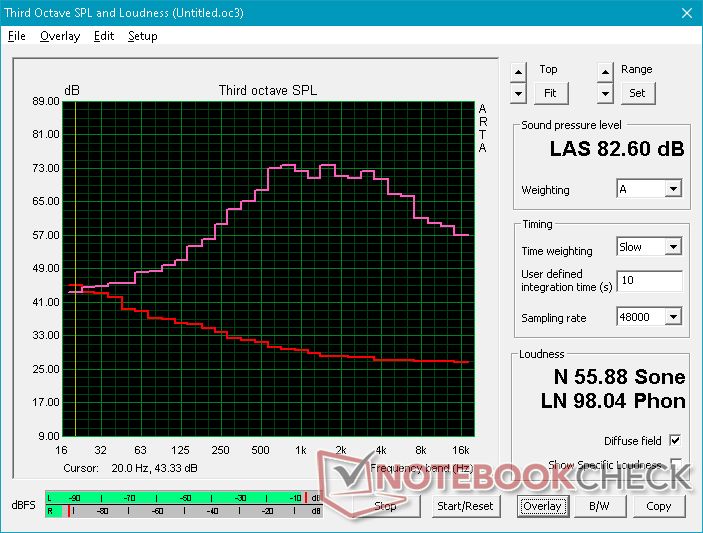
Razer Blade Stealth i7-1065G7 Iris Plus audio analysis
(+) | speakers can play relatively loud (82.6 dB)
Bass 100 - 315 Hz
(±) | reduced bass - on average 10.5% lower than median
(+) | bass is linear (6.5% delta to prev. frequency)
Mids 400 - 2000 Hz
(±) | higher mids - on average 5% higher than median
(+) | mids are linear (6.5% delta to prev. frequency)
Highs 2 - 16 kHz
(+) | balanced highs - only 3.8% away from median
(+) | highs are linear (5.7% delta to prev. frequency)
Overall 100 - 16.000 Hz
(±) | linearity of overall sound is average (18.4% difference to median)
Compared to same class
» 53% of all tested devices in this class were better, 7% similar, 40% worse
» The best had a delta of 5%, average was 18%, worst was 53%
Compared to all devices tested
» 40% of all tested devices were better, 8% similar, 52% worse
» The best had a delta of 4%, average was 24%, worst was 134%
Apple MacBook 12 (Early 2016) 1.1 GHz audio analysis
(+) | speakers can play relatively loud (83.6 dB)
Bass 100 - 315 Hz
(±) | reduced bass - on average 11.3% lower than median
(±) | linearity of bass is average (14.2% delta to prev. frequency)
Mids 400 - 2000 Hz
(+) | balanced mids - only 2.4% away from median
(+) | mids are linear (5.5% delta to prev. frequency)
Highs 2 - 16 kHz
(+) | balanced highs - only 2% away from median
(+) | highs are linear (4.5% delta to prev. frequency)
Overall 100 - 16.000 Hz
(+) | overall sound is linear (10.2% difference to median)
Compared to same class
» 7% of all tested devices in this class were better, 2% similar, 91% worse
» The best had a delta of 5%, average was 18%, worst was 53%
Compared to all devices tested
» 4% of all tested devices were better, 1% similar, 94% worse
» The best had a delta of 4%, average was 24%, worst was 134%
Energy Management
Power Consumption
Idling on desktop will demand anywhere between 6 W and 12 W depending on the power profile and brightness setting. When gaming, power consumption will be about 30 percent higher than the Blade Stealth with Core i7-8550U CPU and 30 to 35 percent lower than the Blade Stealth with Core i7-8565U and GeForce MX150 graphics. Since the latter offers superior gaming performance, its higher power consumption is reasonable in this case.
We're able to record a maximum draw of 50.2 W from the small (~10.8 x 3.5 x 2.7 cm) 65 W AC adapter. Unlike what we discovered on the older Whiskey Lake-U GeForce SKU, battery life will not slowly drain whilst gaming on AC power with this particular Ice Lake SKU.
| Off / Standby | |
| Idle | |
| Load |
|
Key:
min: | |
| Razer Blade Stealth i7-1065G7 Iris Plus i7-1065G7, Iris Plus Graphics G7 (Ice Lake 64 EU), Samsung SSD PM981 MZVLB256HAHQ, IPS, 1920x1080, 13.3" | Razer Blade Stealth i7-8565U i7-8565U, GeForce MX150, Lite-On CA3-8D256-Q11, IPS, 1920x1080, 13.3" | Dell XPS 13 7390 2-in-1 Core i7 i7-1065G7, Iris Plus Graphics G7 (Ice Lake 64 EU), Toshiba BG4 KBG40ZPZ512G, IPS, 1920x1200, 13.4" | Lenovo Yoga C940-14IIL i7-1065G7, Iris Plus Graphics G7 (Ice Lake 64 EU), Samsung SSD PM981 MZVLB512HAJQ, IPS LED, 1920x1080, 14" | Asus ZenBook S13 UX392FN i7-8565U, GeForce MX150, WDC PC SN520 SDAPNUW-512G, IPS, 1920x1080, 13.9" | Razer Blade Stealth QHD i7-8550U i5-8550U, UHD Graphics 620, Samsung PM961 NVMe MZVLW512HMJP, , 3200x1800, 13.3" | |
|---|---|---|---|---|---|---|
| Power Consumption | -22% | 22% | 10% | 6% | 20% | |
| Idle Minimum * (Watt) | 5.9 | 6.7 -14% | 2.6 56% | 3.2 46% | 3.4 42% | 5.6 5% |
| Idle Average * (Watt) | 8.1 | 8.6 -6% | 5.3 35% | 7 14% | 6.3 22% | 7.5 7% |
| Idle Maximum * (Watt) | 11.2 | 9.4 16% | 7 37% | 8.9 21% | 10.4 7% | 8.4 25% |
| Load Average * (Watt) | 44.3 | 64.1 -45% | 43.1 3% | 47.6 -7% | 51 -15% | 33.7 24% |
| Witcher 3 ultra * (Watt) | 41.9 | 63.7 -52% | 43.1 -3% | 39 7% | 31 26% | |
| Load Maximum * (Watt) | 50.2 | 64.1 -28% | 49 2% | 63.1 -26% | 62.7 -25% | 34.6 31% |
* ... smaller is better
Battery Life - Not so Different from Last Year's Model
Expect around 9.5 hours of real-world WLAN use when set to the Balanced power profile to be very nearly the same as what we recorded on the older Blade Stealth i7-8565U with faster GeForce MX150 graphics.
Any of the two Thunderbolt 3 ports can be used to recharge the system. The AC adapter can be used to Quick Charge other USB Type-C devices as well including smartphones, tablets, the Nintendo Switch, and even other laptops with USB PD.
| Razer Blade Stealth i7-1065G7 Iris Plus i7-1065G7, Iris Plus Graphics G7 (Ice Lake 64 EU), 53.1 Wh | Razer Blade Stealth i7-8565U i7-8565U, GeForce MX150, 53.1 Wh | Dell XPS 13 7390 2-in-1 Core i7 i7-1065G7, Iris Plus Graphics G7 (Ice Lake 64 EU), 51 Wh | Lenovo Yoga C940-14IIL i7-1065G7, Iris Plus Graphics G7 (Ice Lake 64 EU), 60 Wh | Asus ZenBook S13 UX392FN i7-8565U, GeForce MX150, 50 Wh | Razer Blade 15 GTX 1660 Ti i7-9750H, GeForce GTX 1660 Ti Mobile, 65 Wh | |
|---|---|---|---|---|---|---|
| Battery runtime | -2% | -7% | 9% | -13% | -43% | |
| WiFi v1.3 (h) | 9.7 | 9.5 -2% | 9 -7% | 10.6 9% | 8.4 -13% | 5.5 -43% |
| Reader / Idle (h) | 20.5 | 28.5 | ||||
| Load (h) | 2.2 | 1.1 | 1.7 |
Pros
Cons
Verdict
The Blade Stealth Ice Lake base model is stuck between a rock and a hard place. It supersedes last year's Blade Stealth Whiskey Lake-U base model and yet it is priced higher than last year's graphically superior Blade Stealth GeForce MX150 model. In other words, you will get an indubitably better gaming experience on the older, cheaper, and thinner MX150 model which makes this pricier Ice Lake base model a tough sell.
Even if you're not interested in gaming at all, WLAN battery life is nearly identical to the GeForce MX150 model while sporting the same display, keyboard, and port options. You'd be paying more for less in this regard.
To be fair, the Ice Lake SKU has a small handful of advantages when compared to the more powerful Blade Stealth GeForce MX150. The newer version is noticeably quieter and cooler when gaming and the CPU integrates AI features not found on Whiskey Lake-U. However, Windows has yet to fully exploit AI acceleration for common day-to-day workloads and so most users won't even notice. As sexy as it may look, the Ice Lake base model just doesn't offer enough over the GeForce MX150 model to justify its higher starting price.
It's $200 more expensive for slower gaming performance and only marginally better raw multi-thread CPU performance over last year's Blade Stealth GeForce MX150. If you want a Blade Stealth with Ice Lake, then you'd be better off with the GTX 1650 Max-Q option instead. Otherwise, skip this Ice Lake base model and go with the GeForce MX150 model.
Razer Blade Stealth i7-1065G7 Iris Plus
- 10/21/2019 v7 (old)
Allen Ngo




